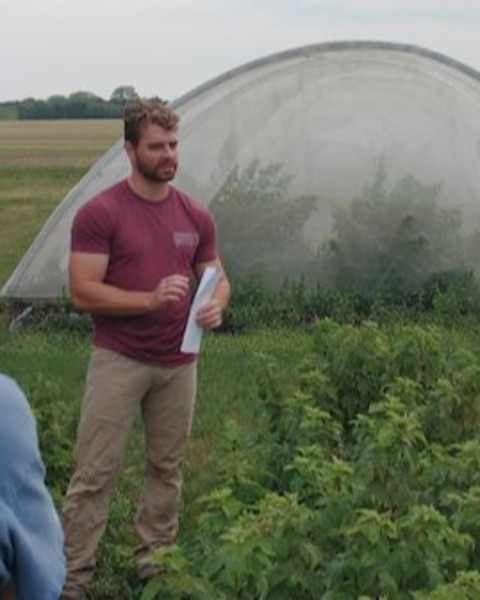P-IE
10-Minute Paper
10-min: P-IE, Horticultural IPM
Understanding adult Japanese beetle feeding impacts on fall raspberry: Correlation between cumulative population pressure and feeding damage
On-Demand

Adam G. Toninato
University of Minnesota
Shoreview, Minnesota- EB
Eric C. Burkness
Univ. of Minnesota
St Paul, Minnesota - WH
William D. Hutchison
University of Minnesota
St. Paul, Minnesota
Presenting Author(s)
Co-Author(s)
The Japanese Beetle (Popillia japonica) was first detected in Minnesota in 1968. Although population growth was limited for decades, populations have increased substantially since 2000. Beyond grub damage to turf, adult feeding on raspberry and other fruit crops has increased significantly, with growers applying additional insecticides to protect high value crops. With an extended emergence pattern from late June to late August, raspberry is vulnerable to constant feeding pressure throughout the season. In this study, we establish a relationship between beetle density on ‘Heritage’ fall raspberry and associated feeding injury, and present initial yield data. To assess the impact of foliar feeding, three levels of adult densities (0, 300 and 900 JB/m-row) were established in fine-mesh, high tunnels (HTs); each HT included 2 rows (3m in length). Treatments were replicated 4 times and arranged in a randomized complete block design. Beetles were released twice ( 7 July, 4 Aug.) to maintain consistent population pressure. Weekly beetle density and defoliation measurements were taken. Beetle counts were taken from one, 1-m row sample per plot; 5 leaflets, taken at random from the the 5th leaf across the canopy, were used to estimate defoliation, via the Leafbyte App. Final results will include the relationship between cumulative beetle density, defoliation, and yield.

